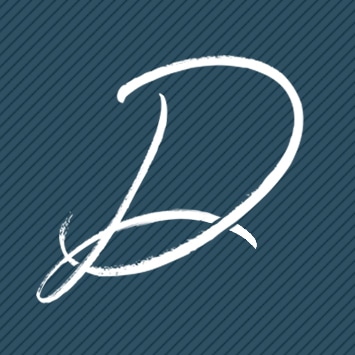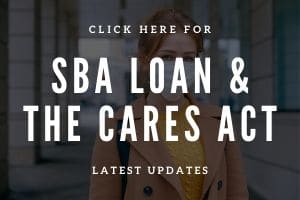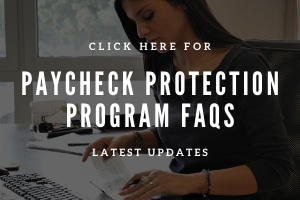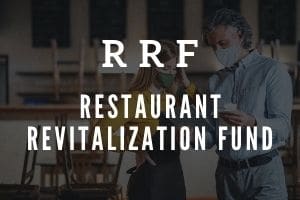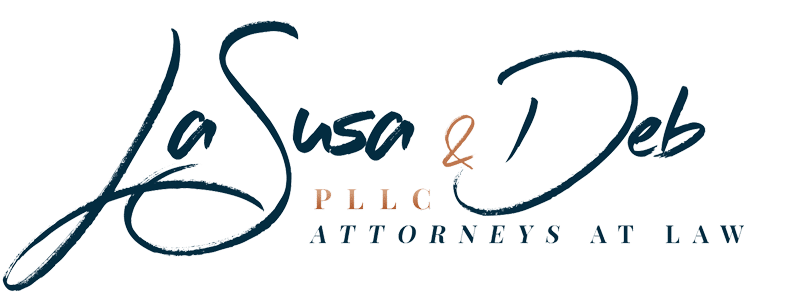Paycheck Protection Program
The Coronavirus Aid, Relief, and Economic Security (“CARES”) Act has provisions for keeping American workers paid and employed. The Paycheck Protection Program allocates almost $350 billion to support emergency loans to qualifying businesses.
Through the Paycheck Protection Program, the Small Business Administration (“SBA”) has the authority to provide 100% federally backed loans through December 31, 2020 to help eligible businesses pay operational costs such as payroll, rent, and utilities. If a business satisfies certain conditions, portions of the loans are forgivable.
Am I eligible?
Five hundred (five hundred) employees of your business are eligible for the Paycheck Protection Program. The 500-employee threshold includes all employees, including full-time, part-time and any other status. There are some
limited exceptions to the 500-employee eligibility requirement for certain industries, such as businesses in the hospitality and food sectors that have multiple locations, which can have up to 500 employees per physical location
of the business. In addition to this basic eligibility threshold, a lender providing a loan under the Paycheck Protection Program is required to consider whether the business: (i) was in operation on February 15, 2020,
and (ii) had employees or independent contractors for whom the business had paid salaries, compensation and payroll taxes.
How Long Will This Last?
The Covered Period is defined as the period from February 15, 2020 and ending on June 30, 2020.
What is the Maximum We Can Receive?
During the Covered Period, an eligible business’s maximum loan amount is based upon the business’s average total monthly payroll costs incurred during the one-year period before the date of the loan. An adjustment to this one-year period is available for businesses with a seasonal workforce. During the Covered Period, each eligible business may receive up to 2.5 times its average monthly payroll costs subject to a $10 million limitation. Certain payroll costs are excluded in calculating the maximum loan amount, including:
- individual employee compensation over $100,000;
- payroll and income taxes;
- compensation for an employee with a principal place of residence outside the United States; and
- qualified sick leave or family leave wages for which a business will receive a credit under the Families First Coronavirus Response Act.
How Can I Use the Funds?
During the Covered Period, an eligible business can use the funds obtained through the Paycheck Protection Program for the following categories:
- payroll costs;
- cost related to the continuation of group health care benefits during periods of paid sick, medical, or family leave, and insurance premiums;
- employee salaries;
- interest payments on any mortgage;
- rent and utility payments; and
- interest payments on any other debt obligations that were incurred before February 15, 2020.
Loan Forgiveness
Businesses receiving a loan through the Paycheck Protection Program are eligible for loan forgiveness. The amount of forgiveness cannot exceed the principal amount of the loan, but may equal up to a business’s costs during the 8
weeks following the date of the loan’s origination for the following categories:
- Payroll costs;
- Interest on real or personal property mortgage obligations in existence before February 15, 2020 and incurred in the ordinary course;
- Rent under a lease agreement in force before February 15, 2020; and
- Utility payments, including electricity, gas, water, transportation, telephone or internet, for which service began before February 15, 2020.
Other Key Features of the Payroll Protection Program
- No Collateral or Personal Guarantee. Unlike the typical approach to collateral and personal guarantees with SBA loans, collateral and a personal guarantee are not required for a loan obtained through the Paycheck Protection Program, except if the funds are used for non-allowable uses.
- Loan Fees. Typical SBA loan fees are waived for a loan obtained through the Paycheck Protection Program.
- Deferral of Payments. Payments of principal and interest on a loan obtained through the Paycheck Protection Program are deferred for a period of six months to one year.
- Lack of Prepayment Penalties. A loan obtained through the Paycheck Protection Program is not subject to a prepayment penalty.
- Maximum Rate and Term. The maximum rate of interest that can be charged for a loan obtained through the Paycheck Protection Program is four percent. The maximum term of a loan obtained through the Paycheck Protection Program is ten years from the date on which the business applies for loan forgiveness.
- Coordination with Other Federal Support. If the business has obtained an Economic Disaster Injury Loan, the business cannot obtain a loan under the Paycheck Protection Program for the same purpose.
- Payroll Tax Credits and Payment Deferrals. A business obtaining a loan through the Paycheck Protection Program will not be able to use the payroll tax credits available under the Families First Coronavirus Act for employee retention or the deferral of employer-side social security payroll taxes under the CARES Act.
Get Updates on The CARES Act
For business owners and nonprofits, stay updated with information relating to The CARES Act and SBA Disaster Relief Loans.
Subscribe for Updates